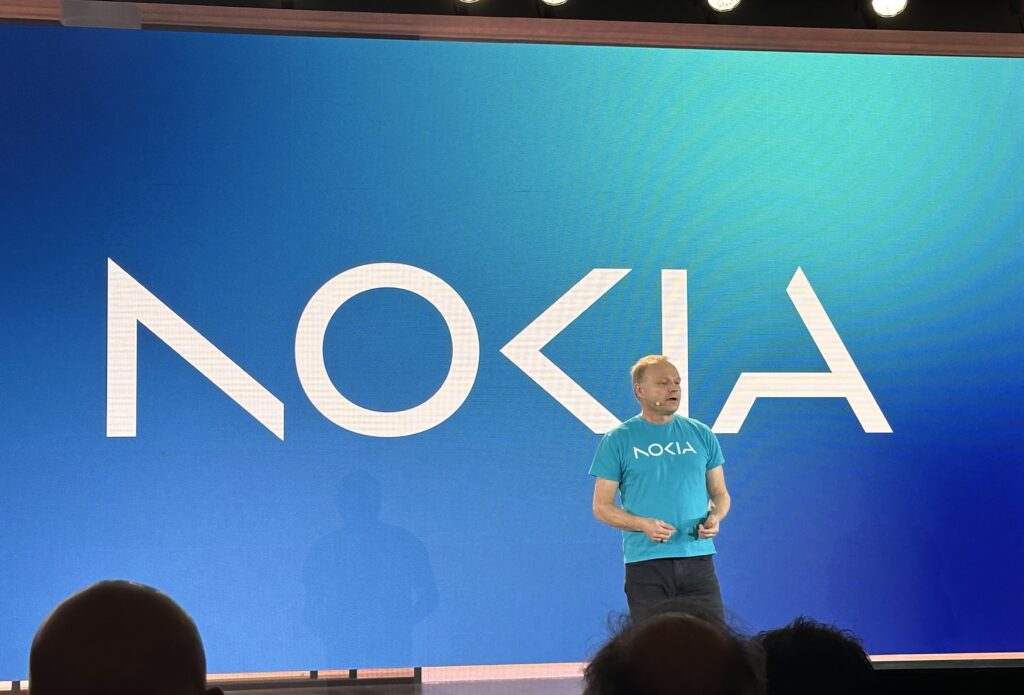Throughout the 5 days and across 30 meetings, two key themes surrounding the mobile ecosystem emerged: Automation and Monetization, especially as they relate to the key benefits of 5G and 5G Standalone (SA) core networks. Both automation and monetization are needed to accommodate the scale, new business models, and CI/CD ethos behind cloud-native and 5G SA.

Monetization is needed to help justify the tremendous investment needed to deploy 5G and subsequent technologies.
Nokia MWC 2023 Business Update
Over the coming decade Nokia will focus on the following strategic pillars to help it accelerate its growth:
The company will execute on these strategic pillars with the following company enablers:

GSMA’s Open Gateway Initiative
Telefónica and GSMA Chairman, José María Álvarez-Pallete, speaking at the opening session of the MWC, stressed that the new GSMA Open Gateway standard, unveiled today in Barcelona, “Bonds Telcos, the Industry, Big Techs and Developers to create the digital future together”.
“GSMA Open Gateway Initiative started with a Memorandum of Understanding (MoU) signed by 20 companies, with the capacity to reach 3.8 billion people and eight standardized APIs under CAMARA, an industry initiative presented at MWC 2022 precisely for the development of the APIs needed to launch GSMA Open Gateway now.”
Ribbon Communications: Cloud-native SBC
While it might appear that this announcement is late in the game for introducing cloud-native network functions, that is not the case. Most operators deploying new voice network functions, including IMS, have been choosing VNFs in lieu of CNFs.
Microsoft Azure Communications Gateway
As part of the massive number of announcements from Microsoft, they announced the general availability of the Azure Communications Gateway, their E-SBC solution designed to leverage both their Operator Connect Program and Team Phone Mobile and to ease integration with legacy phone systems. Azure Communications Gateway sits at the edge of an operator’s network, where it functions to secure, normalize, and interwork both voice and IT traffic between the operator and Microsoft Teams. It is a globally available managed service that simplifies network integration and accelerates time to market by removing the need for disruptive voice network changes and substantial IT system integration projects associated with adapting on-premises solutions. Obviously, the Azure Communications Gateway will offer more competition to AudioCodes, Oracle, Ribbon and others who derive a substantial amount of their E-SBC business from Teams integrations.
Mavenir
Mavenir featured a slew of announcements mostly around their efforts in penetrating the RAN market, including a significant partnership with Deutsche Telekom. The company has a great deal riding on capturing some material share of the RAN market as we discuss in our summary of their Fall 2022 analyst event: https://exactventures.com/mavenir-nov2023/
Huawei
Huawei, as always, had a massive presence at MWC. From a core networks perspective, their key message was that at enhancements were needed throughout the mobile network ecosystem (RAN, Transport, and Core) in order to deliver on the original promise of 5G hence “5.5G.” Here are some highlights:
In terms of standards, 3GPP established the 5G-Advanced project in early 2021 and initiated the formulation of R18 standards to enhance network capabilities. For example, UPF Mesh and MEC enhancement are introduced to enable 5G to be applied to more industry use-cases. The NG-RTC enhances the communication capability and enriches the communication service. The XRM technology enhances the video service optimization capability and meets the experience requirements of new video services, such as HD video and spatial video.
Voice services: 5.5G Core improves the quality of mobile network calls, and upgrades the call experience from simple audio and video to intelligent interaction, making voice services more than just a communication tool. Instead, they become a platform for carriers to potentially offer even more new services. For example, 5.5G Core adds a data channel based on the existing IMS audio and video channels. Having “three channels on one network” can enable a more interactive user experience.
5.5G Core meets the requirements for multi-service private networks by improving the “connectivity + edge computing” feature to redirect industry-specific private networks from covering a single scenario in a service domain to all scenarios in all domains. 5.5G Core also builds the mobile network into a Data, Operation, Information, Communication Technology (DOICT) foundation that can empower all industries.
Ericsson
Ericsson’s Imagine Live kickoff event (https://www.youtube.com/watch?v=pCJcTGbGDz4)
included an update on their Intel partnership on Open RAN and the importance of cloud RAN in improving the economics and scalability as connectivity needs grow. Other presenters highlighted the opportunities for monetization through enterprise integration via their Vonage acquisition and how Application Programming Interfaces (APIs) and network capabilities such as speed, latency and network slicing will create innovation opportunities.
Get in touch